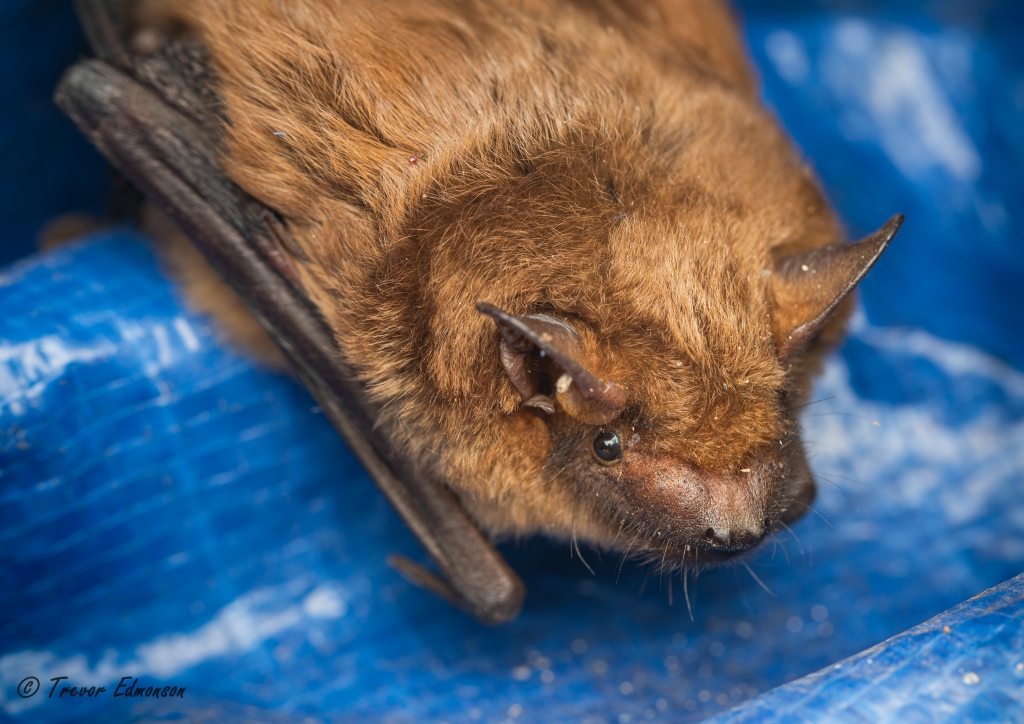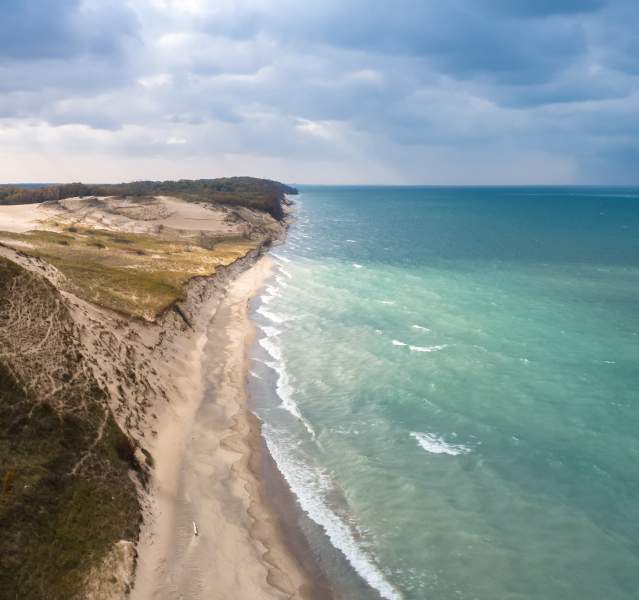One Bat, Two Bat
By Alyssa Nyberg
This spring we were delighted to look up and find that our furry, winged, big brown bat mascot was hanging upside down again this year in the rafters of the Kankakee Sands seed processing barn. Ah! Some normalcy in these craziest of times!
The big brown bat (Eptesicus fuscus) is much as its name describes – big (for a bat) = five inches in length with a wingspan of 13 inches and brown fur all over, except for its black furless face, ears, tail, and wings.
 Photo by Trevor Edmonson / TNC
Photo by Trevor Edmonson / TNC
It’s a great mascot for our seed barn as bats are quiet most of the day, roosting and resting, with the occasional stretch and yawn while we work with the native plant seeds down below. It’s after sundown when the bats are the most active, eating up to their own bodyweight of 12 – 24 grams (the weight of one to two AAA batteries) of beetles, moths, flies, and wasps each night.
Big brown bats, like many bat species, exhibit site fidelity, returning year after year to the same woods, cave, home, or barn. But you just never know if a bat will make it back the following year. As much as I enjoy having a bat in the barn, owls, snakes, raccoons, and cats all like bats, too!
This summer, there seemed to be more bat scat (that is fun to say, isn’t it?) on the barn floor than last year. Looking up, we discovered TWO big brown bats roosting in the rafters! Now, this was an exciting development and posed some interesting questions.
Were they male, or female, or one of each? That was a very hard question to answer because male and female bats look so similar, differing slightly in size with the females being larger than the males.
If the bat were a female, it could have been pregnant and could have given birth in May or June, which would account for the second bat in the barn. However, female big brown bats are known to roost in maternity colonies of several to many bats, and only rarely do they give birth and raise young alone.
Male big brown bats are known to be solitary in nature for most of the spring and summer. It’s only after fall that they are known to come together with other bats to roost in caves, structures, and even abandoned mines.
Could it have been a male and a juvenile female? Or two juvenile females? Or…
That’s the excitement of science, observing, and questioning. In fact, the very first step of the Scientific Method is observation!
One thing we can be certain of is that big brown bats are native to North America, Central America, northern South America, and the Caribbean. They are just one of the thirteen species of bats found in Indiana, six of which are state endangered and five are species of special concern.
Across the United States, most bat populations are in steep decline. Loss of roosting and foraging areas, coupled with a fungal disease called white-nose syndrome, has been hard on bats. Interestingly, big brown bat numbers are on the rise! In fact, big brown bats are the most common bat in Indiana at this time, and the reason seems to be its adaptability.
When its historical habitat of woodlands became less available, big brown bats took to roosting in human-constructed structures. They often roost in unheated structures like our seed barn in the summer and heated structures like homes and churches in the winter.
At Kankakee Sands and Conrad Station Savanna, we are working to create quality roosting and foraging habitat for many animals, including the big brown bat. Even though there are many suitable trees available for summer roosting, we kinda like having a bat in the barn… or even two!
If you’d like to learn more about the bats of Indiana, join us on Thursday, October 22, 2020, at 6 pm central time for our Halloween webinar. “Trick or Treat? Bats: A Spectacularly Spooky Species” will feature experts who will answer all your batty questions! Learn more about nature.org/IndianaTV.
_________________________________________________________________________
The Nature Conservancy’s Kankakee Sands is an 8,300-acre prairie and savanna habitat in Northwest Indiana, open every day of the year for public enjoyment. For more information about Kankakee Sands, visit www.nature.org/KankakeeSands or call the office at 219-285-2184.

